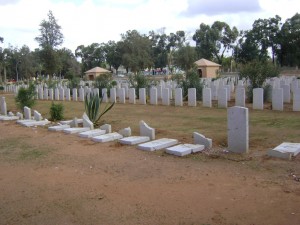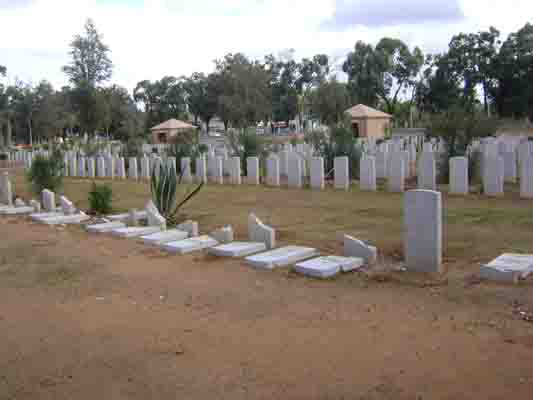
The . . .[restrict]Second World War cemetery in Benghazi was extensively damaged on Friday by unknown attackers. One hundred and nine headstones bearing crosses were smashed and memorials defaced among the 1,051 graves of Allied servicemen slain in Libya during the 1939-45 conflict. The cross at the centre of the cemetery was destroyed.
Among the dead buried there were British, Australian, New Zealand, South African, Indian, Sudanese and even one or two Libyan soldiers. The cemetery contains the remains of soldiers of many faiths. Most were Christian but there are a significant number of Muslims buried there too.
Officials at the Libyan Foreign Ministry were said to be and deeply upset and angry over the incident.
Speaking on TV, Libya’s Chief Mufti, Sheikh Sadiq Abdurrahman Ghariani, condemned the perpetrators saying that the attack was against Islam and the law and that the authorities had to deal with them.
Sources at the NTC, which is meeting in Misrata, said that they were unaware of the attack.
The cemetery, which is one of 23,000 in 150 countries maintained by the UK’s Commonwealth War Graves Commission, is cared for by a local contractor.
There has been speculation that the attack was carried out by Islamists prompted by outrage at the burning by US troops in Afghanistan of copies the Holy Quran. The attackers may have been seeking to revenge themselves on what they saw as a Christian target.
Islamists are not widespread in Libya but in the relative absence of forces of law and order have been active recently. They have attacked several mosques around the country containing the tombs of marabouts (holy men) and stolen the bodies which they have secretly buried elsewhere, causing considerable shock and anger among the general public.
A week ago, before the uproar over the Quran burnings,a number of tombs in Tripoli’s Christian cemetery were vandalized. Whether this was by Islamists or just vandals is unknown.
Reports have also been circulating on Facebook that there was an attempt this week to remove the gazelle fountain on Tripoli’s corniche.
Besides perhaps being unaware that among the fallen buried there were Muslims, those who smashed up the cemetery maybe did not know that one important outcome of the Allies’ defeat of the Axis in North Africa, was the ousting of the Italian colonists.
This led to the creation of a free and independent Libya, the return of which, after the dark Qaddafi decades, the very same people who wrecked the Benghazi graveyard, were almost certainly celebrating on 17 February.
Benghazi Military Cemetery is one of three second world graveyards in the city. There is another 100 meters from it, on the same road. It was undamaged but it has a high fence around it and a locked gate. There is no fence and no gates to the vandalised cemetery.
[/restrict]










